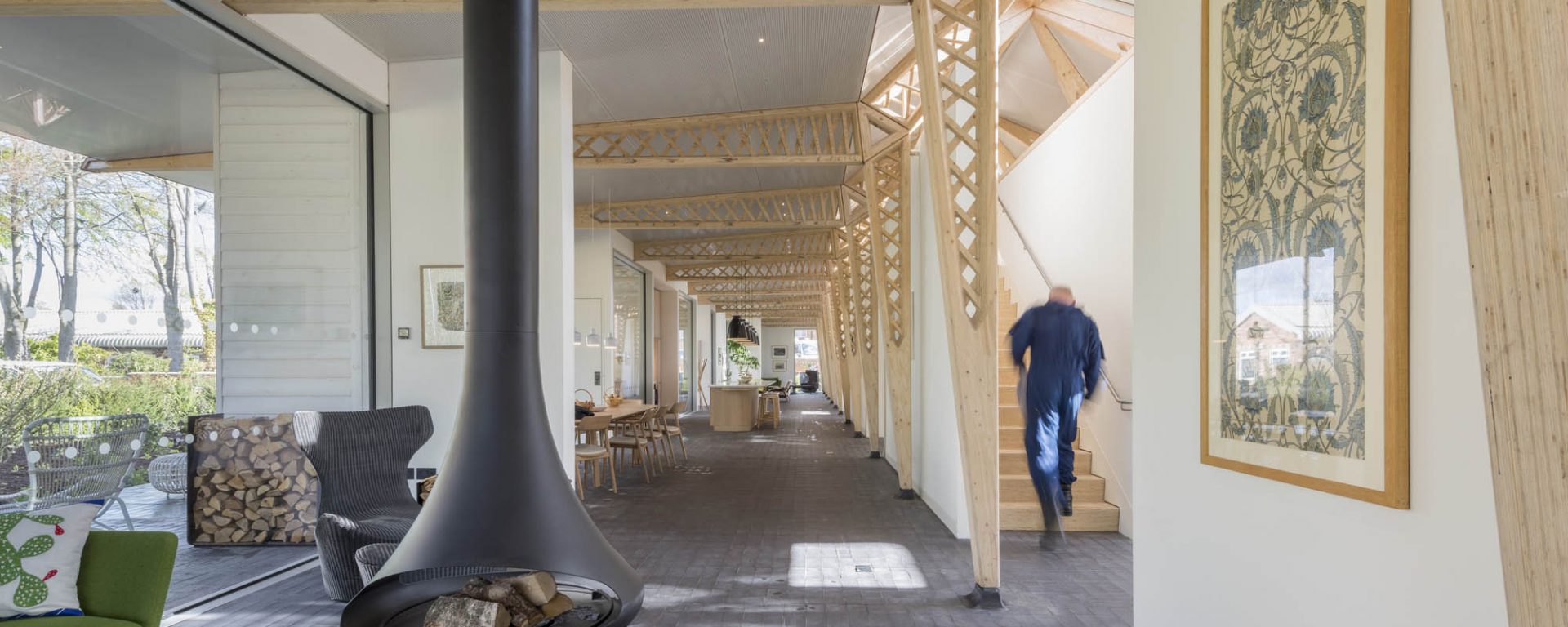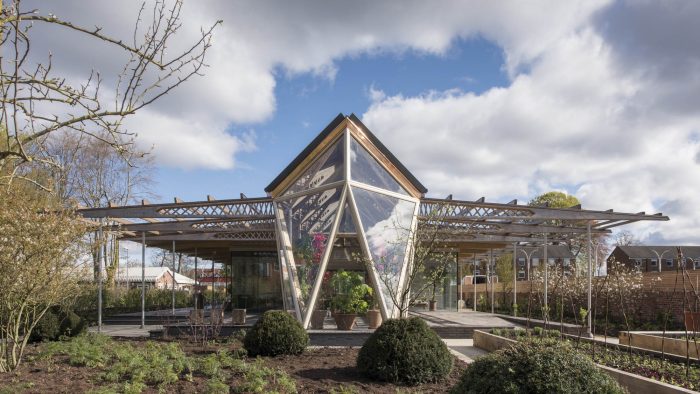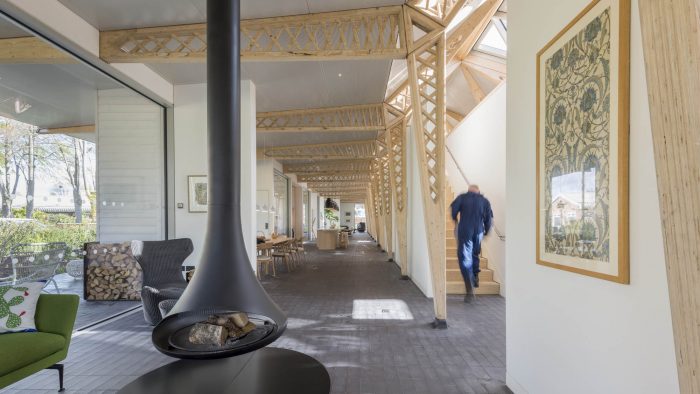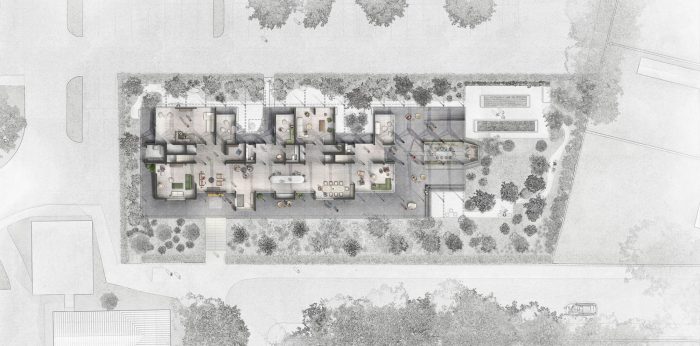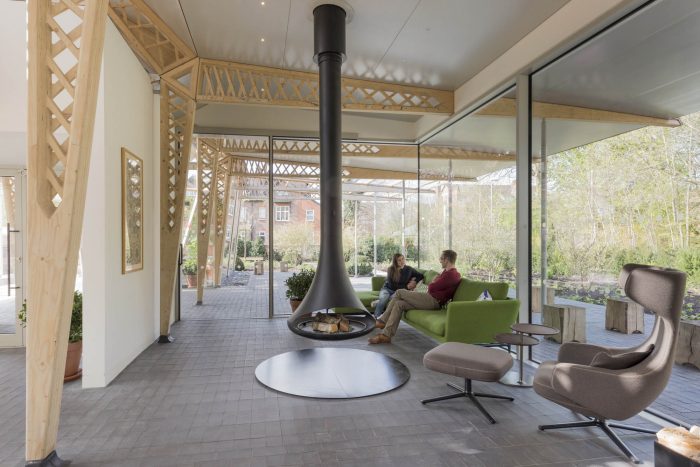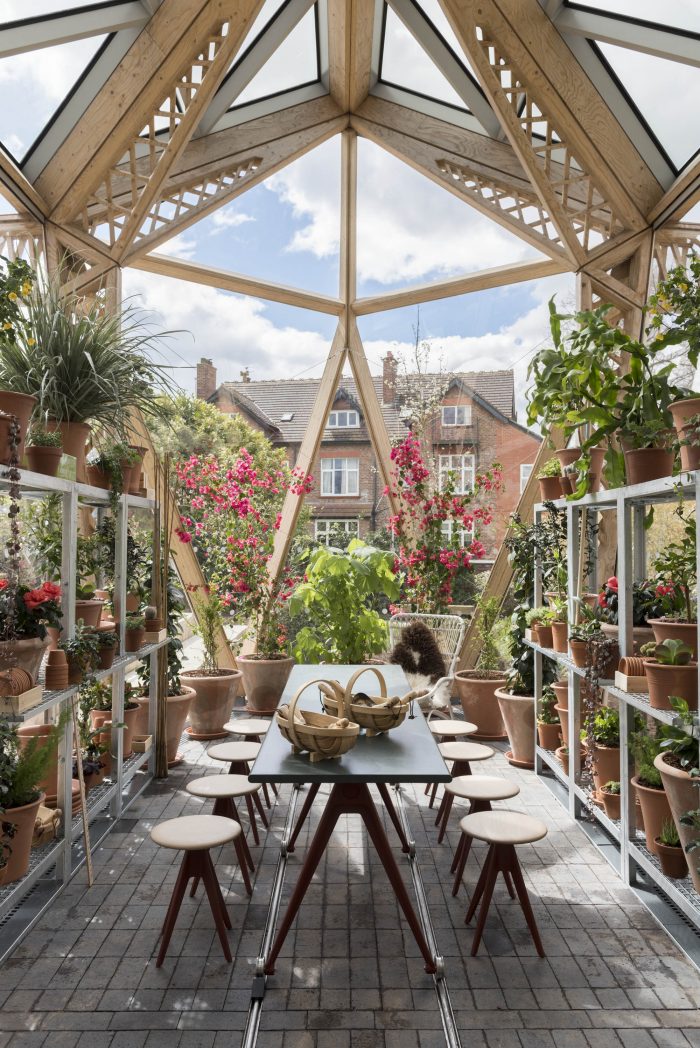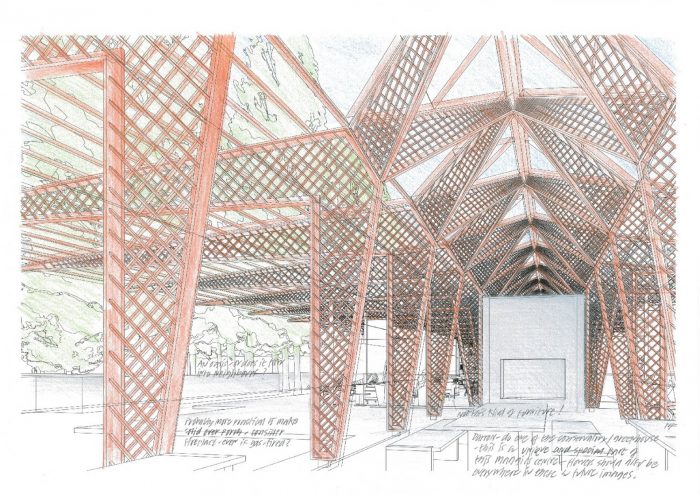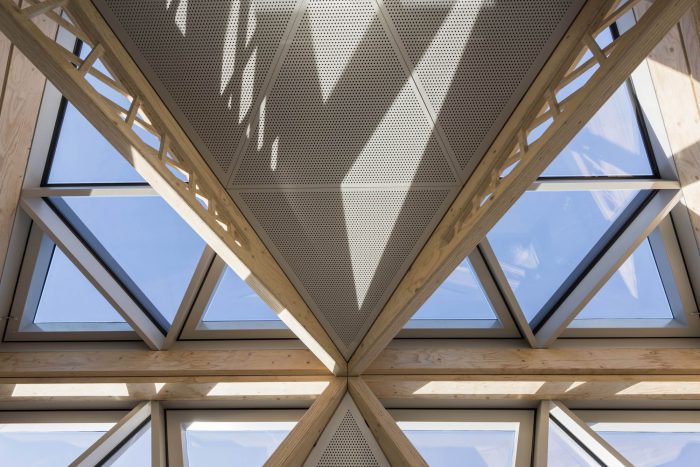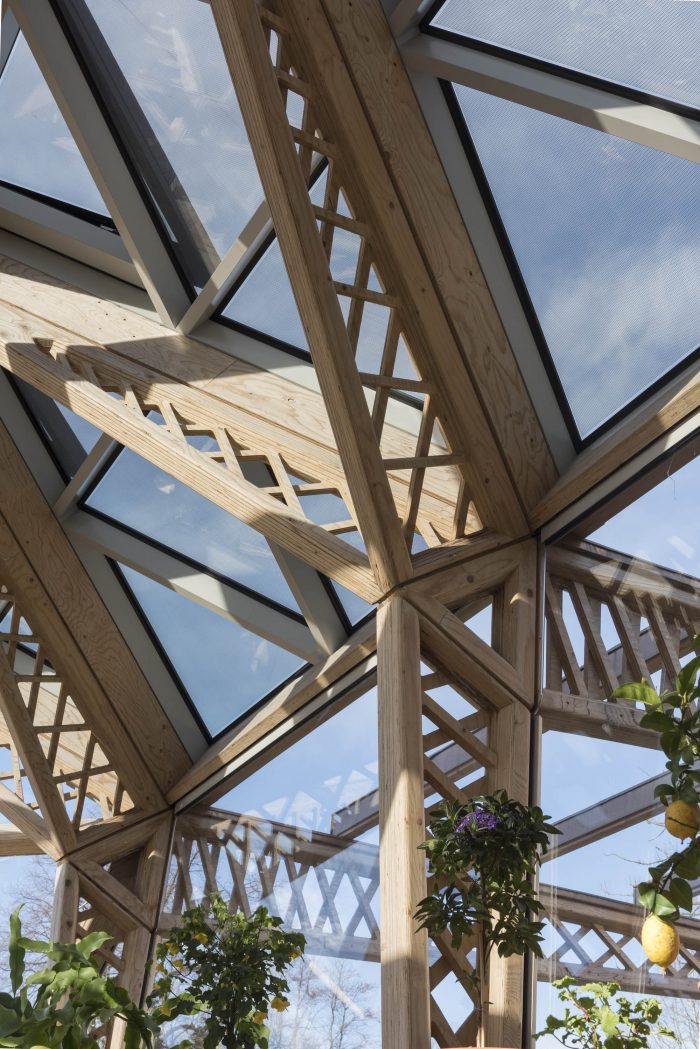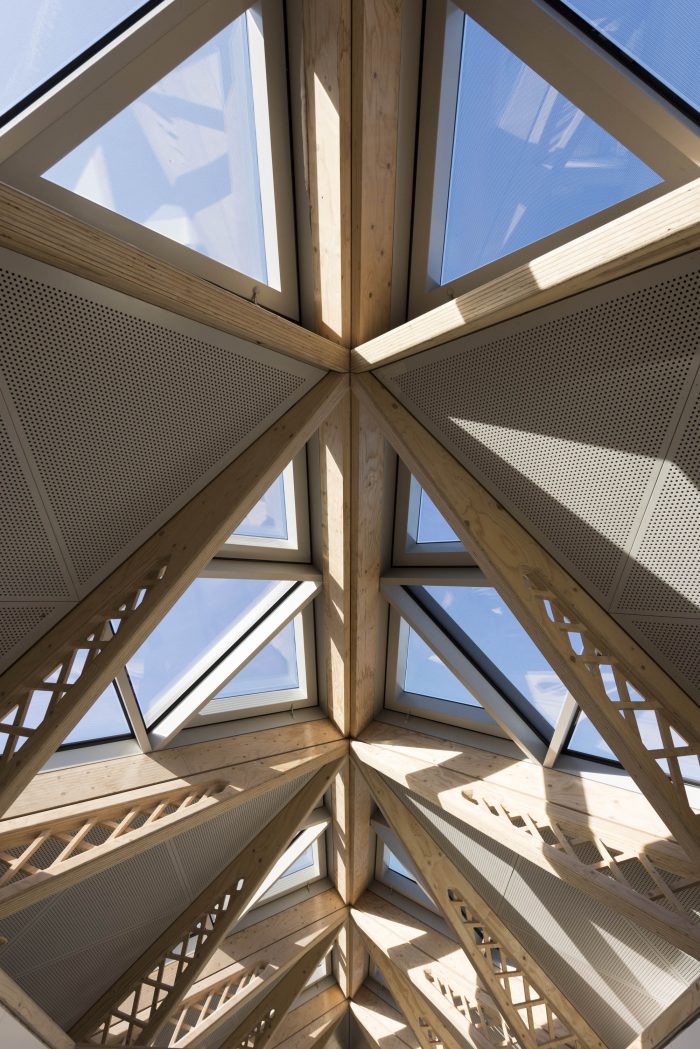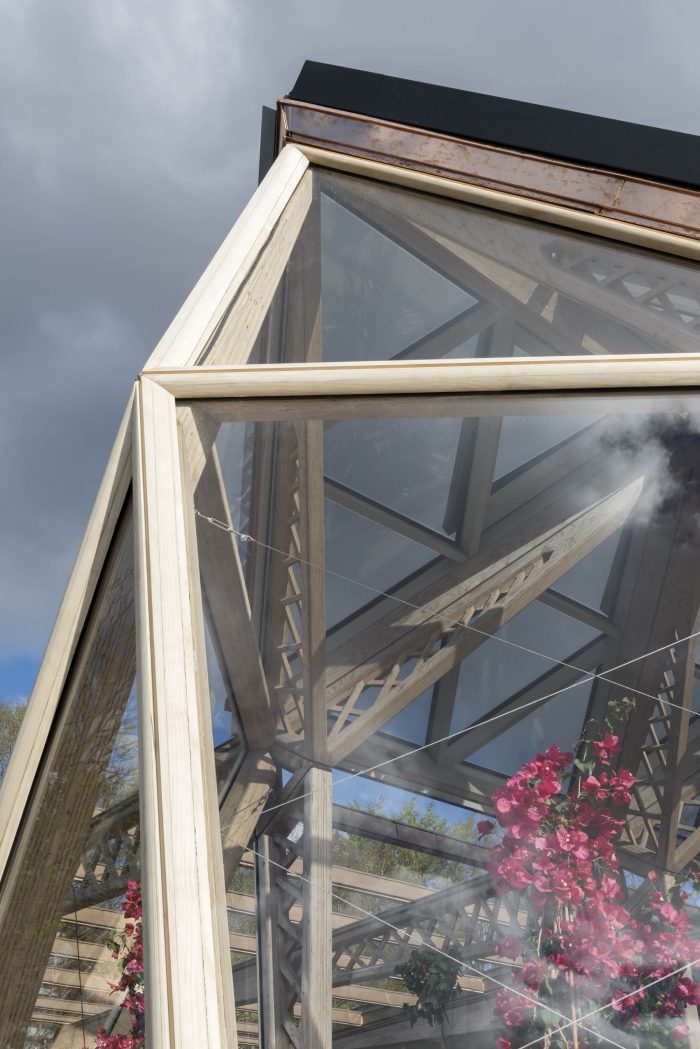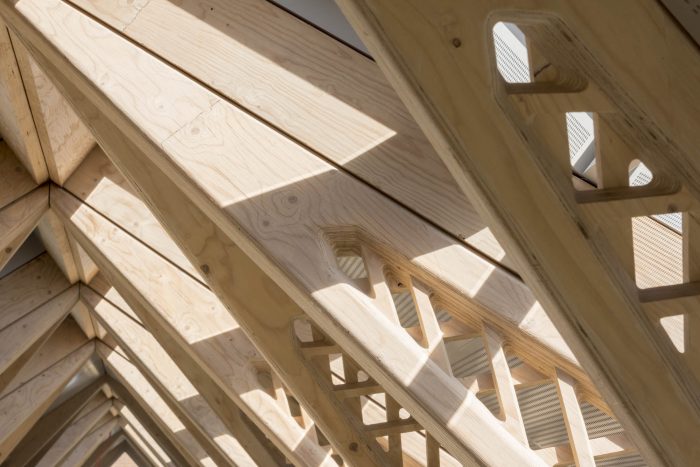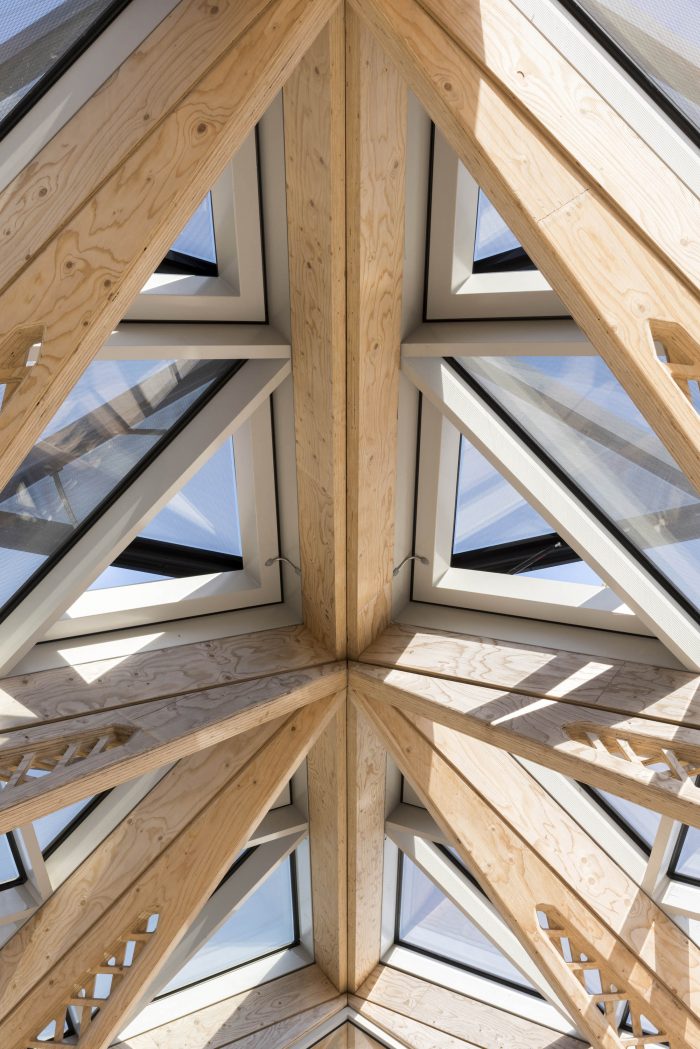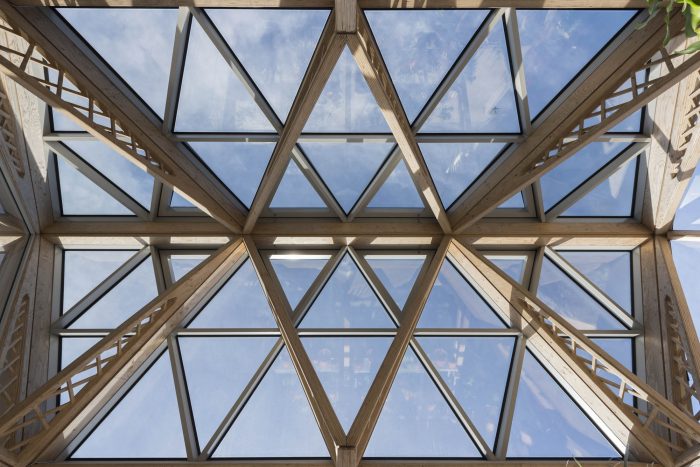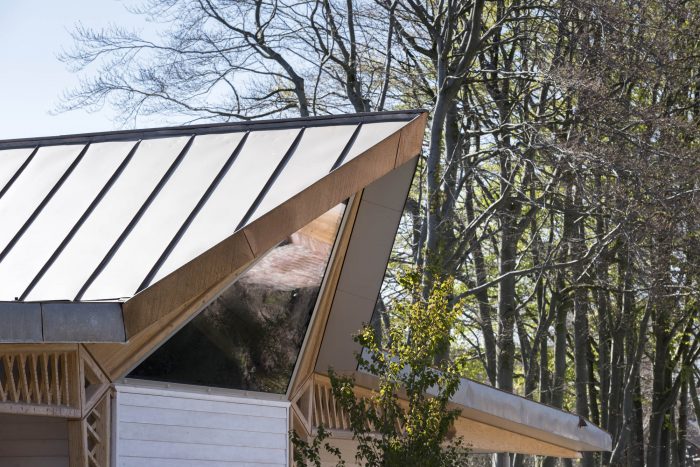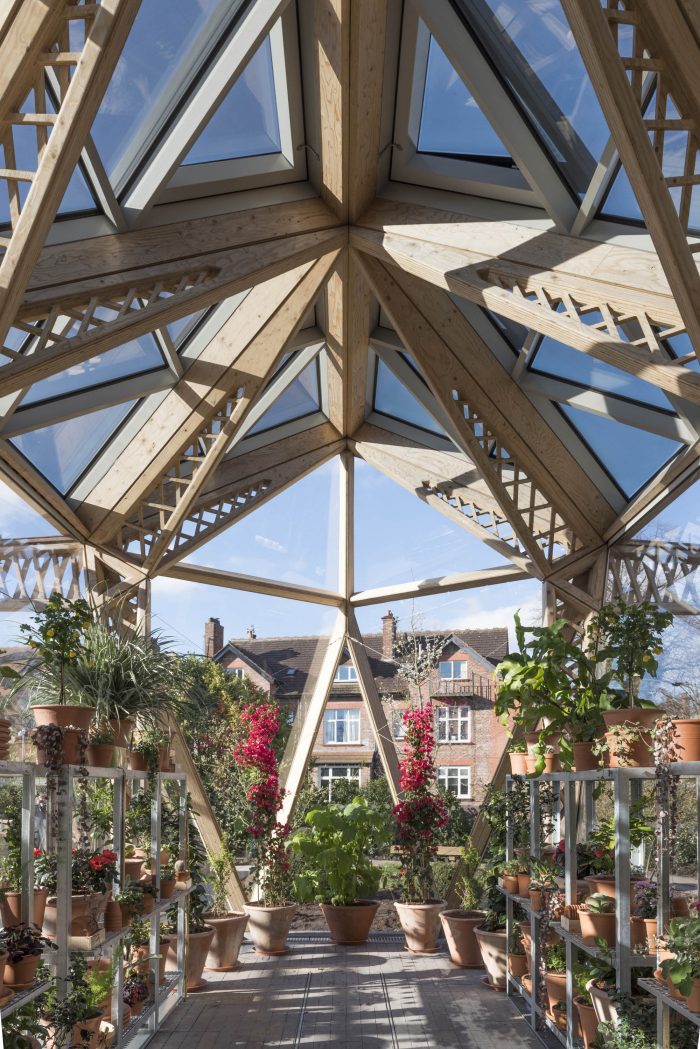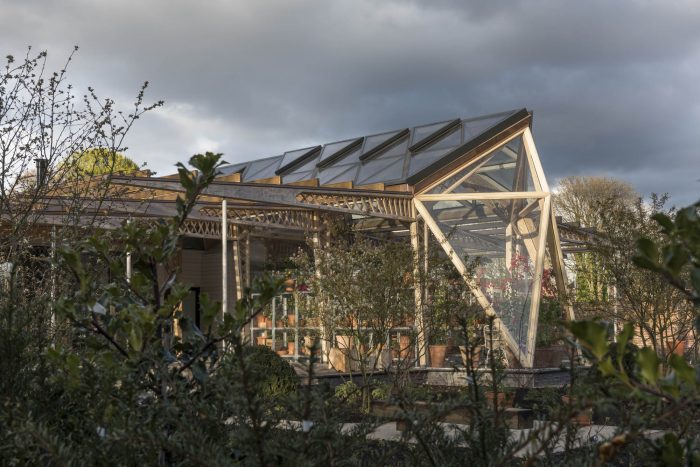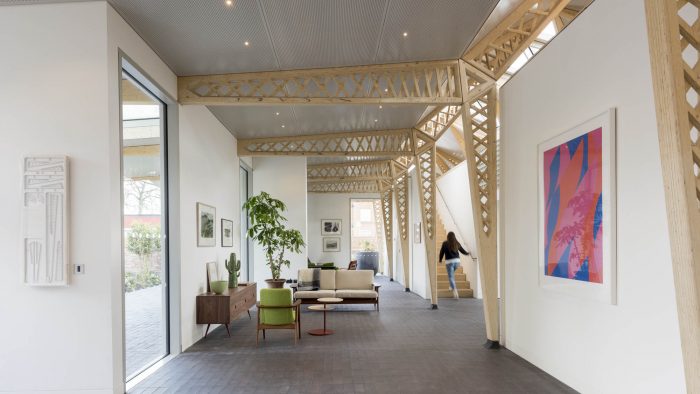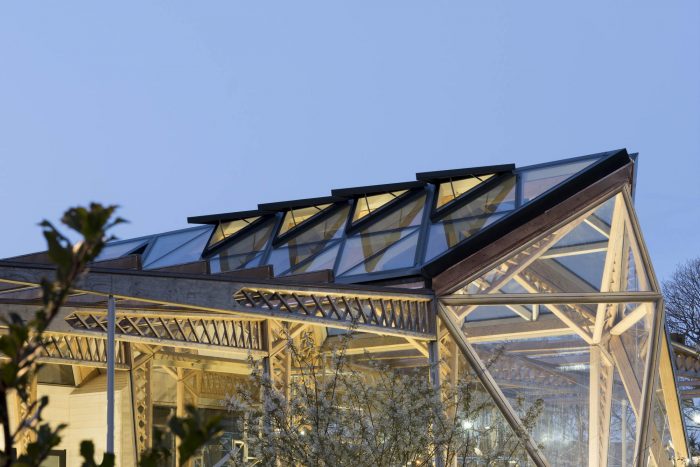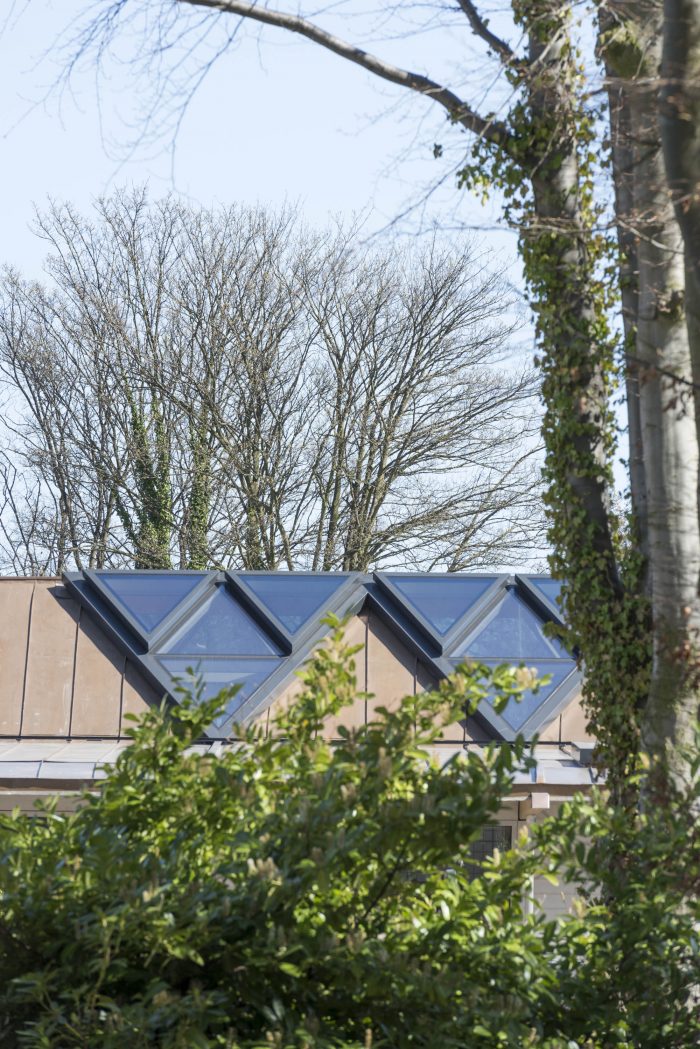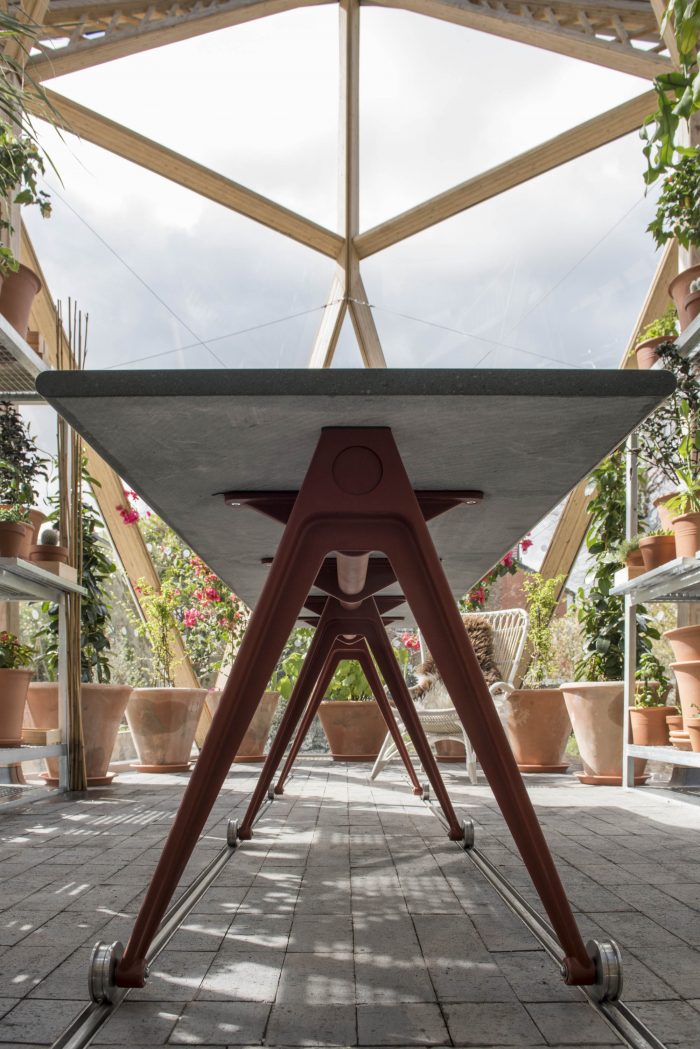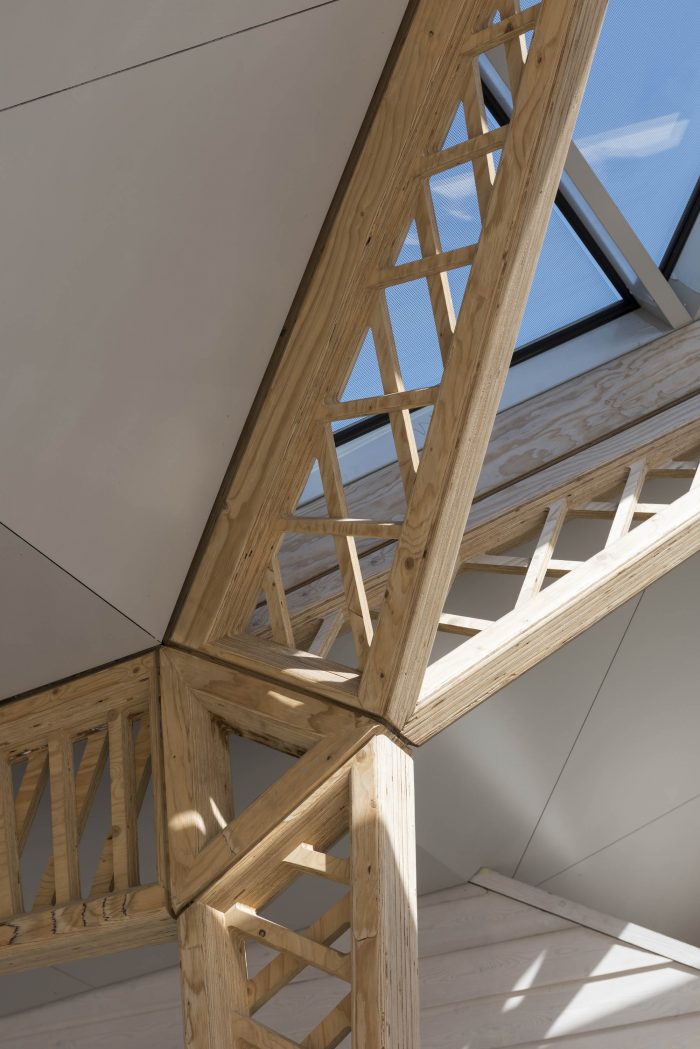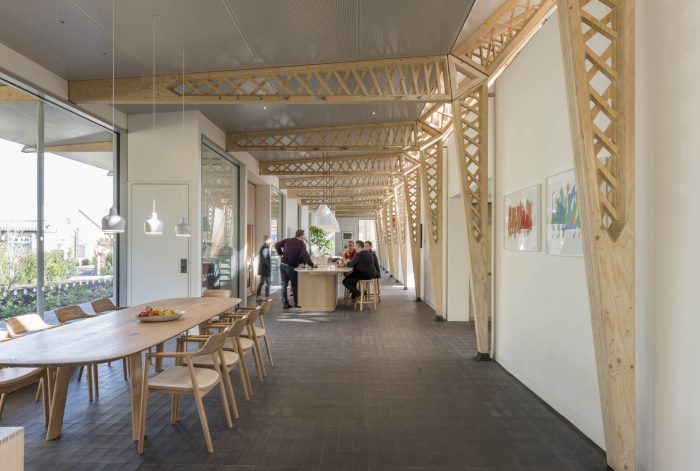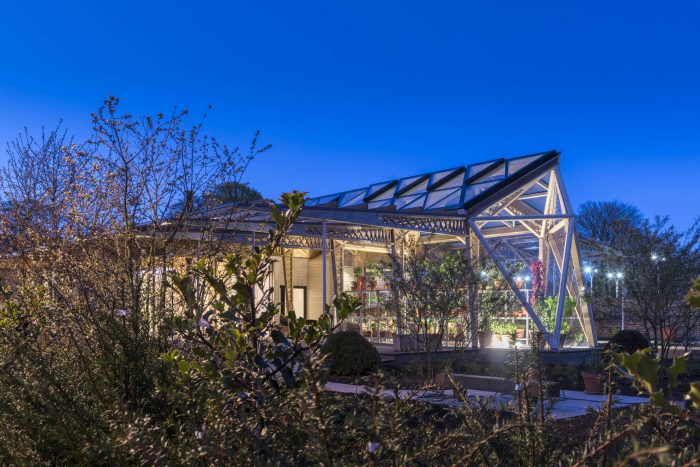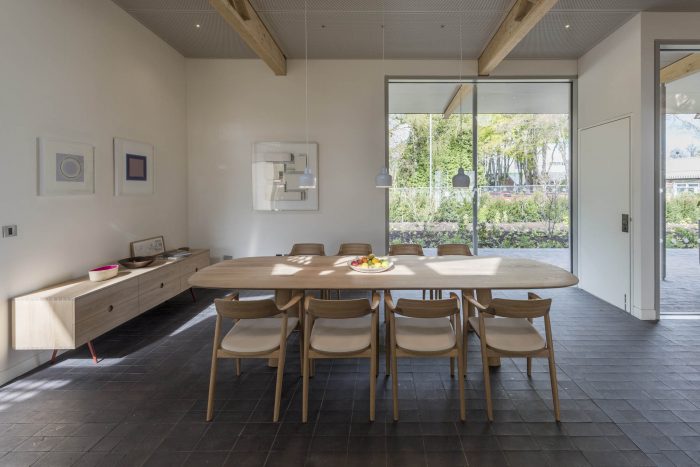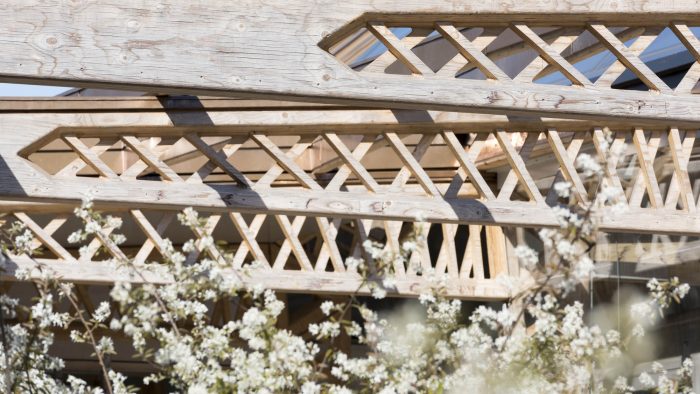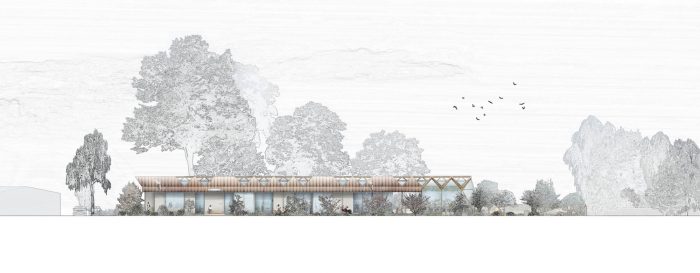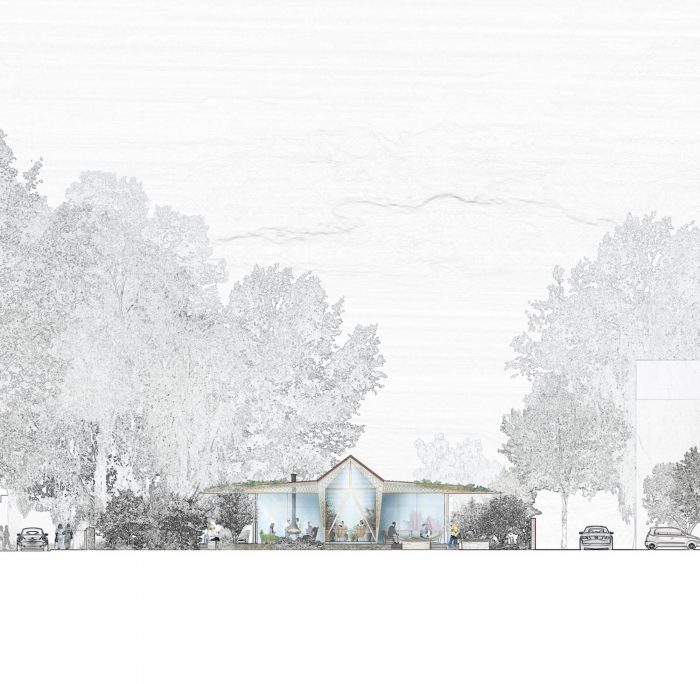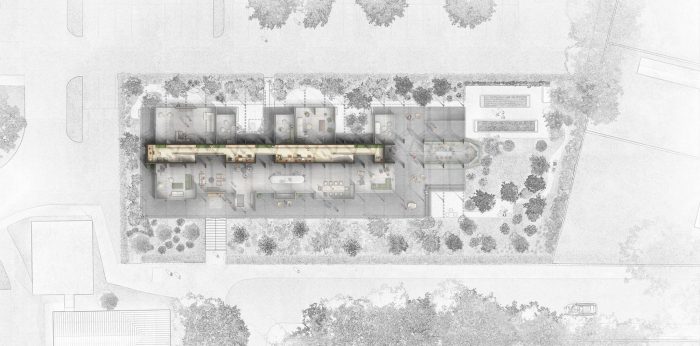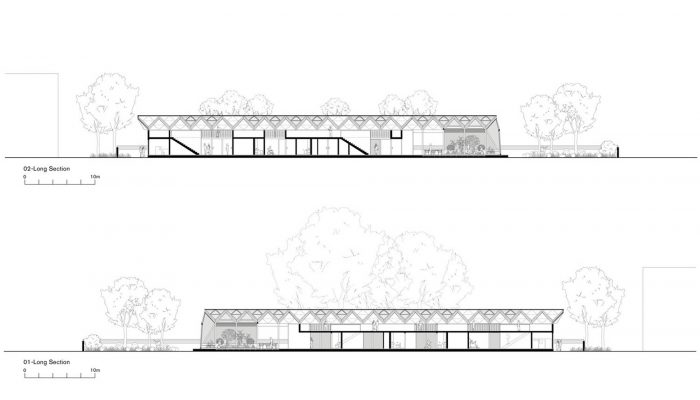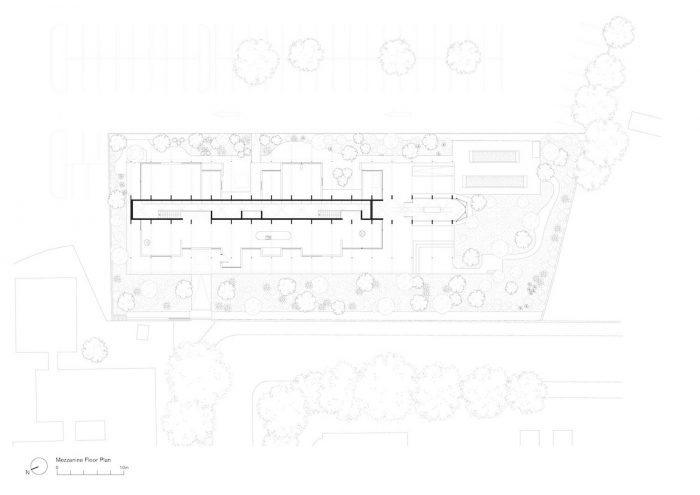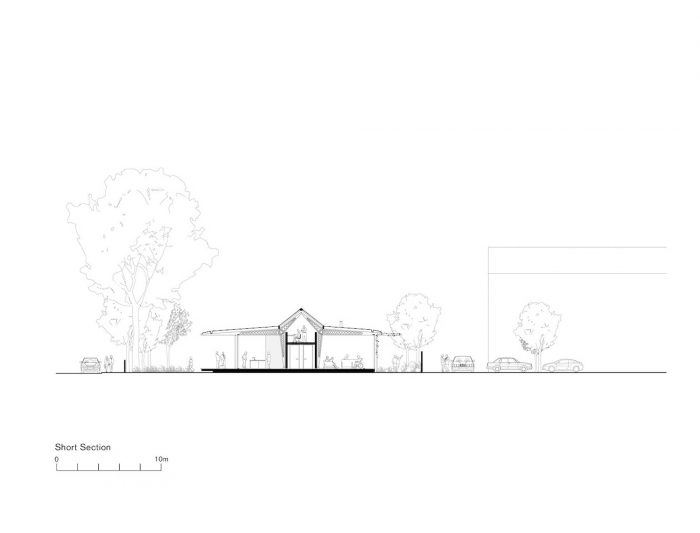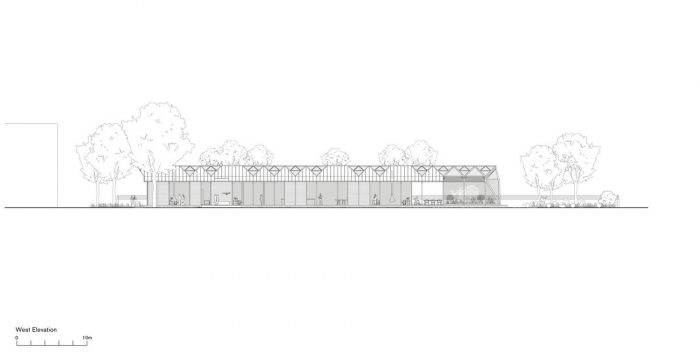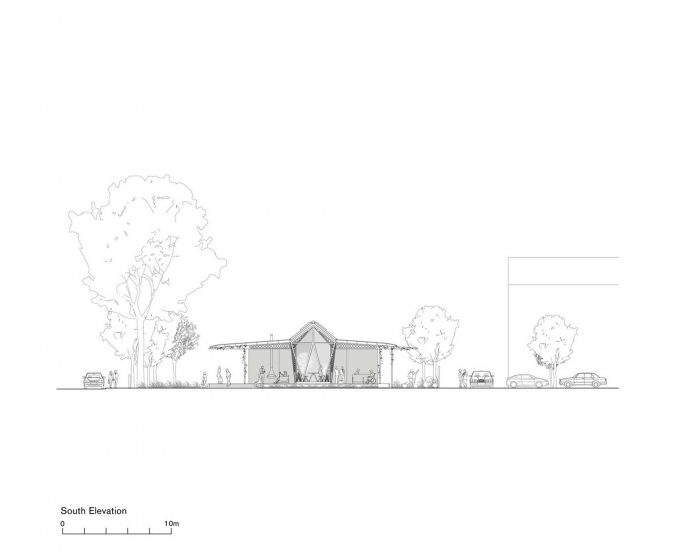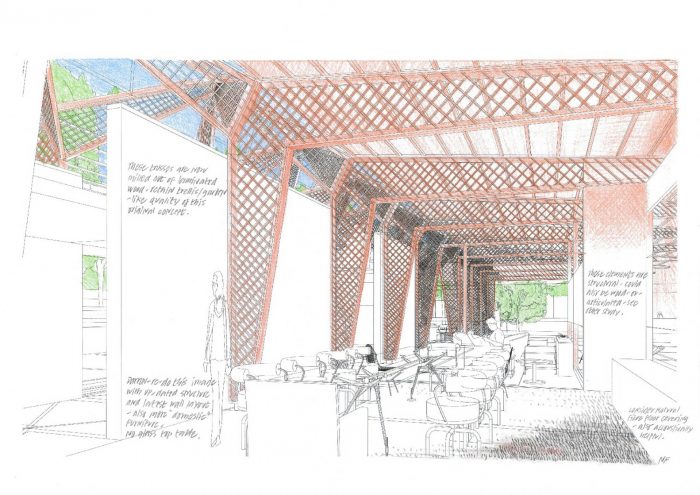Maggie’s中心遍布英国和海外,旨在提供一个温馨的 “家外之家”–一个庇护所,让受癌症影响的人在这里找到情感和实际的支持。灵感来自于Maggie Keswick Jencks提出的新型护理蓝图,他们非常重视建筑的力量,以提升精神和帮助治疗的过程。曼彻斯特中心的设计旨在在花园环境中营造一种家庭氛围,并且恰如其分地在一条绿树成荫的街道尽头,距离佳士得医院及其主要肿瘤科很近。
Located across Britain and abroad, Maggie’s Centres are conceived to provide a welcoming ‘home away from home’ – a place of refuge where people affected by cancer can find emotional and practical support. Inspired by the blueprint for a new type of care set out by Maggie Keswick Jencks, they place great value upon the power of architecture to lift the spirits and help in the process of therapy. The design of the Manchester centre aims to establish a domestic atmosphere in a garden setting and, appropriately, is first glimpsed at the end of a tree-lined street, a short walk from The Christie Hospital and its leading oncology unit.
建筑物占据了一个阳光充足的场地,并被安排在一个单层上,保持其低矮的外形,并反映了周围街道的住宅规模。 屋顶从中间升起,形成一个夹层,自然地由三角形屋顶灯照亮,并由轻质木格梁支撑。 这些梁柱作为不同内部区域之间的自然隔断,在视觉上将建筑溶入周围的花园。 该中心结合了各种空间,从私密的私人壁龛到图书馆、运动室,以及聚集和分享一杯茶的地方。 建筑的核心是厨房,它的中心是一张大型的公共餐桌。 摒弃了诸如走廊和医院的标志等机构参照物,而采用了家庭式的空间。 为此,材料的调色板结合了温暖、自然的木材和触感的表面。工作人员将不显眼,但接近和接近。 支持性办公室被安置在宽阔的中央脊柱顶部的夹层,下面是厕所和储藏空间,保持整个建筑的自然视觉连接。
The building occupies a sunny site and is arranged over a single storey, keeping its profile low and reflecting the residential scale of the surrounding streets. The roof rises in the centre to create a mezzanine level, naturally illuminated by triangular roof lights and it is supported by lightweight timber lattice beams. The beams act as natural partitions between different internal areas, visually dissolving the architecture into the surrounding gardens. The centre combines a variety of spaces, from intimate private niches to a library, exercise rooms and places to gather and share a cup of tea. The heart of the building is the kitchen, which is centred on a large, communal table. Institutional references, such as corridors and hospital signs have been banished in favour of home-like spaces. To that end the materials palette combines warm, natural wood and tactile surfaces. Staff will be unobtrusive, yet close and accessible. Support offices are placed on a mezzanine level positioned on top of a wide central spine, with toilets and storage spaces below, maintaining natural visual connections across the building.
整个中心注重自然光、绿色植物和花园景观。 直线形的规划被景观庭院所点缀,整个西立面延伸到一个宽阔的阳台,屋顶的深层悬空可以遮挡雨水。 滑动的玻璃门将建筑通向由丹-皮尔森工作室打造的花园环境。 东侧立面的每个治疗和咨询室都面对着自己的私人花园。 建筑物的南端,延伸出一个温室–这是一个对光和自然的赞美–它提供了一个花园休憩的空间,让人们聚集在一起,用他们的双手工作,享受自然和户外的治疗品质。这将是一个种植花卉和其他产品的空间,可以在中心使用,在病人感到最脆弱的时候给他们一种目标感。
Throughout the centre, there is a focus on natural light, greenery and garden views. The rectilinear plan is punctuated by landscaped courtyards and the entire western elevation extends into a wide veranda, which is sheltered from the rain by the deep overhang of the roof. Sliding glass doors open the building up to a garden setting created by Dan Pearson Studio. Each treatment and counselling room on the eastern façade faces its own private garden. The south end of the building, extends to embrace a greenhouse – a celebration of light and nature – which provides a garden retreat, a space for people to gather, to work with their hands and enjoy the therapeutic qualities of nature and the outdoors. It will be a space to grow flowers and other produce that can be used at the centre giving the patients a sense of purpose at a time when they may feel at their most vulnerable.
该中心由Foster+Partners设计和施工,还配备了由Norman Foster和Mike Holland设计的定制家具,Mike Holland是该诊所工业设计团队的负责人。 这些家具包括厨房单元和桌子、餐具柜和其他货架单元。
The centre, designed and engineered by Foster + Partners, also features bespoke furniture designed by Norman Foster and Mike Holland who heads out the industrial design team in the practice. These include kitchen units and table, sideboards and other shelving units.
福斯特勋爵,Foster + Partners的主席和创始人。
“我对癌症诊断的痛苦有第一手的经验,并了解玛吉中心作为一个提供信息、避难所和支持的疗养地是多么重要。我們在我年輕時居住的城市的目標,是要創造一個溫馨、友善、沒有任何醫院或健康中心機構色彩的建築,一個充滿光亮、家庭式的空間,讓人們可以聚集在一起、談天或簡單地反思。这就是为什么整个建筑都注重自然光、绿色植物和景观;温室提供新鲜的鲜花,并强调自然和户外的治疗品质。木质框架,有助于将建筑与周围的绿色植物连接起来–在外部,这个结构将部分种植藤蔓,使建筑看起来溶入花园中。”
Lord Foster, Chairman and Founder of Foster + Partners:
“I have first-hand experience of the distress of a cancer diagnosis and understand how important Maggie’s Centres are as a retreat offering information, sanctuary and support. Our aim in , the city of my youth, was to create a building that is welcoming, friendly and without any of the institutional references of a hospital or health centre – a light-filled, homely space where people can gather, talk or simply reflect. That is why throughout the building there is a focus on natural light, greenery and views; with a greenhouse to provide fresh flowers, and an emphasis on the therapeutic qualities of nature and the outdoors. The timber frame, helps to connect the building with the surrounding greenery – externally, this structure will be partially planted with vines, making the architecture appear to dissolve into the gardens.”
建筑师:Foster + Partners
面积:1922 m²
年份:2016年
摄影:Nigel Young / Foster + Partners
制造商: Aurubis, Blumer Lehmann, 3V Architectural Hardware, Benchmark Furniture
工料测量师:Gardiner & Theobald
结构工程师:Foster + Partners
景观设计师:Dan Pearson Studio
M+E工程师:Foster + Partners
客户:The Maggie Keswick Jencks Cancer Caring Centres Trust
城市:曼彻斯特
国家:英国
Architects: Foster + Partners
Area: 1922 m²
Year: 2016
Photographs: Nigel Young / Foster + Partners
Manufacturers: Aurubis, Blumer Lehmann, 3V Architectural Hardware, Benchmark Furniture
Quantity Surveyor: Gardiner & Theobald
Structural Engineer: Foster + Partners
Landscape Architect: Dan Pearson Studio
M+E Engineer: Foster + Partners
Client:The Maggie Keswick Jencks Cancer Caring Centres Trust
City:Manchester
Country:United Kingdom

